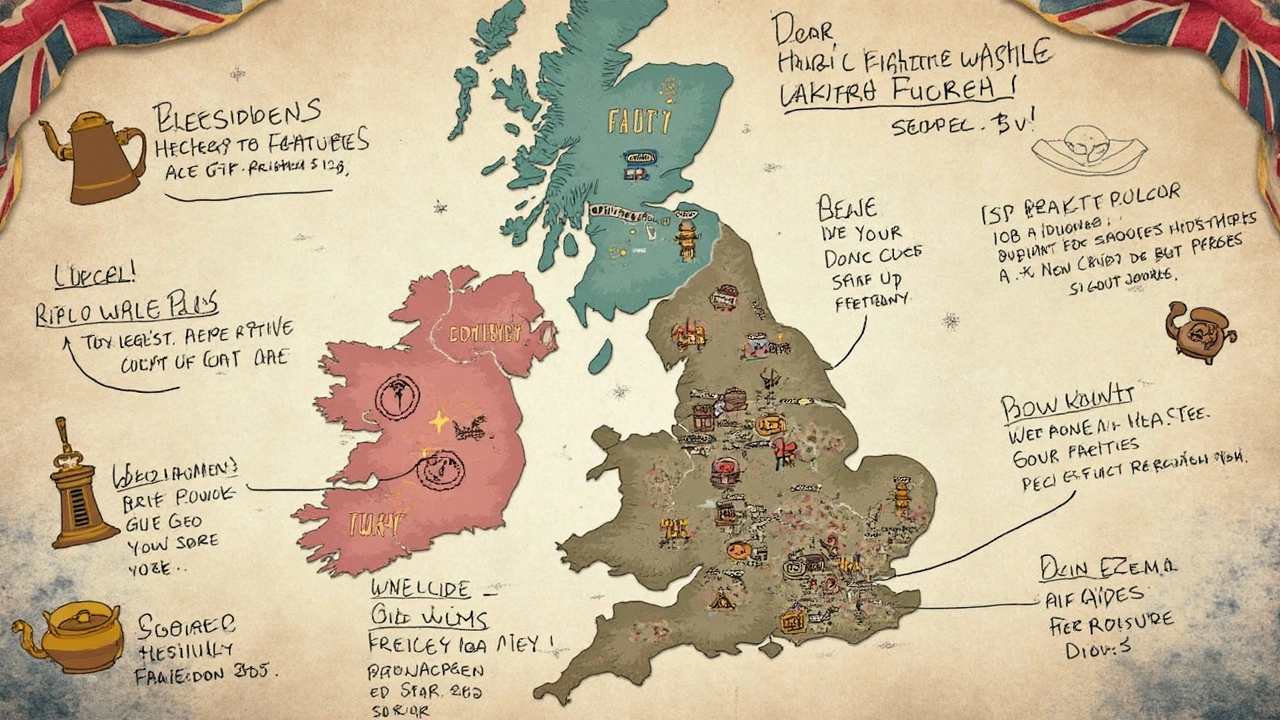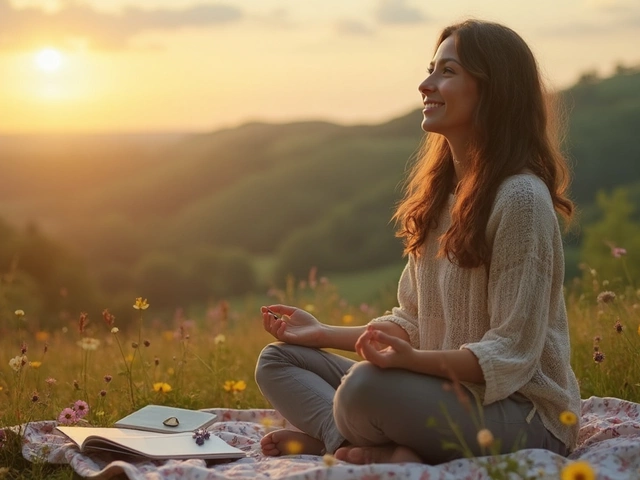Figuring out how to charge for pressure washing jobs can be a bit of a puzzle, right? It's not just about throwing random numbers out there and hoping one sticks. You gotta be strategic! Getting your pricing right is key, not just for making a profit, but for staying competitive too.
First things first, let's talk about understanding your costs. You've got your basic expenses—things like fuel, equipment maintenance, and cleaning supplies. These aren't just one-time costs. They pile up over time, so keeping a close eye on them helps you not only cover your expenses but also see some returns.
Next up, evaluate the size and complexity of the job. Not all pressure washing gigs are created equal. A small porch and a massive warehouse need different levels of effort and time. Think about how long a specific job will take you and factor in the difficulty. Is it a flat surface, or are you going around obstacles?
Once you get a handle on the nitty-gritty, it helps to figure out some pricing strategies. Some folks go for an hourly rate while others might charge by square footage. Knowing what your local competition is doing can help you make sure you're in the right ballpark. Also, consider adding a bit for those times when you're dealing with particularly stubborn grime or an extra tricky spot.
- Understanding Your Costs
- Evaluating Job Size and Complexity
- Pricing Strategies and Tips
- Communicating with Customers
Understanding Your Costs
Getting a handle on costs is a huge part of running a successful pressure washing business. You don't want to undercharge and end up losing money or overcharge and scare customers away. It's all about balance, and knowing your expenses is where to start.
So, what are the basics? Well, first up, there's your equipment. Whether it's the pressure washer itself, hoses, nozzles, or safety gear, all of these have initial costs and ongoing maintenance needs. Set aside a regular budget for repairs and replacements when they wear out. Stuff like this can be a sneaky expense, but keeping them in top shape makes things run smoothly.
Next, consider your operational costs. This includes fuel if you're driving to job sites, and potentially costs for powering your equipment if you're using electric washers. Plus, cleaning supplies! Detergents and solutions that tackle different surfaces or stains can add up over time. Make sure you’re fully stocked and using efficient, quality products.
Traveling to clients? Don't forget to factor in travel time and expenses like gas. If you're on the road a lot, these costs can sneak up. Some folks add a travel fee for jobs outside their usual range to cover these extra miles.
Then there’s labor. If you’ve got a team, their wages are a significant part of your outgoing costs. Paying fair wages keeps your crew motivated, which translates to happy customers and repeat business. Even if you’re flying solo, putting a value on your own time helps in setting rates that reflect your worth.
Lastly, think about insurance. It might feel like an optional extra, but it's a lifesaver if things go south. Plus, having insurance can make you look more professional and trustworthy.
Here's a simple way to track these costs over a month:
| Expense Type | Monthly Cost |
|---|---|
| Equipment Maintenance | $150 |
| Fuel and Travel | $200 |
| Cleaning Supplies | $100 |
| Labor Wages | $3,000 |
| Insurance | $150 |
Seeing it laid out can help you better plan how much to charge to cover customer billing effectively. Keeping these numbers up-to-date and reviewing them regularly is super helpful, so you're always in the loop about where your money's going.
Evaluating Job Size and Complexity
When it comes to pressure washing, not every job is as simple as it looks at first glance. Evaluating the size and complexity of a job is crucial to setting the right price. Let's break down the factors that come into play.
First, assess the area you need to clean. Whether you're dealing with someone's driveway or a commercial building, measuring the square footage is a solid starting point. Estimating this can help you determine how long the job will take and how much it will cost you in terms of labor and materials.
- Square Footage: For large areas, like a parking lot, think in terms of square feet. The bigger the space, the more it impacts your costs.
- Surface Type: Are we talking about concrete, vinyl siding, or wood decks? Different surfaces require different pressure settings and cleaning solutions, which can affect pricing.
- Grime Level: Pay attention to how dirty the area is. A lightly stained surface might clean up quickly, but years of built-up dirt will take some extra elbow grease.
Complexity adds another layer to your pricing. Imagine dealing with a single-story home's exterior compared to a multi-level office building filled with nooks and crannies. That office building demands more time, care, and sometimes specialized equipment.
Access is another factor. Is the area easy to reach, or will you need ladders or scaffolding? The more challenging it is to access the area, the more you should charge.
To give you an idea of how this works in real life, here's a quick look at some numbers:
| Job Type | Avg Time (hrs) | Avg Cost ($) |
|---|---|---|
| Residential Driveway | 1-2 | 150-250 |
| Commercial Building | 4-6 | 500-1000+ |
| Wood Deck | 2-3 | 200-400 |
Consider these factors carefully. They impact not just your costs but also customer satisfaction. Nobody likes unexpected charges, so being upfront about what you see and how it fits into your pricing structure helps build trust. Always explain to your customer why a job might cost more due to its size or complexity. Transparency is your friend here!

Pricing Strategies and Tips
So you're ready to figure out some solid pricing strategies for your pressure washing business. Let's get into the meat of it. There are a few different ways you can approach this, and it's crucial to find what works best for you and your customers.
One popular method is charging by the hour. This is straightforward and ensures you're compensated fairly for your time, especially if a job takes longer than expected. However, make sure to communicate upfront about how long you think the job will take to avoid any customer surprises.
Another option is pricing by the square footage. This is often used for larger surfaces like driveways or siding. It can be attractive to customers because it gives them a clear idea from the get-go of what they will pay. Just make sure you're precise in your measurements and clear about the costs per unit of area.
If you're dealing with complex jobs, consider a fixed quote. This accounts for your time, material costs, and job difficulty. Be clear in what’s included in your quote to avoid any misunderstandings.
Here's a little tip: bundle your services. Offer a deal for multiple jobs, like washing both a driveway and a patio. Customers often see this as more value for their money, and it helps you fill up your calendar with multiple tasks.
If you're considering where to start with your pricing, look at what competitors in your area are charging. Call it a bit of market research. You don’t want to be the cheapest guy on the block unless you've got a solid strategy for high volume or quick turnarounds.
Let's look at a simple example to visualize pricing:
| Square Footage | Average Price |
|---|---|
| Up to 1,000 sq ft | $100 - $250 |
| 1,000 to 1,500 sq ft | $250 - $450 |
| 1,500 sq ft and up | $450 and above |
Finally, don't forget to keep an eye on your overhead and adjust your prices as needed. Inflation can impact costs unexpectedly, and you don't want to be caught off guard. Keeping your pricing nimble is just as important as your wash techniques!
Communicating with Customers
Talking money with customers might feel like walking on eggshells, but trust me, clarity is your best friend here. You don't want a customer shocked by their bill just as much as you don’t want to argue over your pressure washing pricing later.
Start by being transparent from the get-go. When a customer reaches out, make sure they understand what's included in your service. Are you doing just the walls or tackling the driveway too? Lay down everything clearly to avoid any 'Oh, I thought…' moments later.
Here’s a quick step-by-step on keeping the communication crystal clear:
- Discuss Scope and Expectations: Get a grasp of what the customer actually needs. Maybe they don’t need full-blown cleaning but just specific areas like a backyard patio.
- Provide an Estimate: Give an estimate right after understanding their needs. Detail what each item costs and keep the guesswork out of the conversation.
- Mention Possible Extras: Sometimes hidden dirt or tough stains can take longer. Highlight the possibility of extra charges upfront if the need for additional work arises.
- Put It in Writing: Always follow up with an email or text summarizing the job and the breakdown of charges. This step is gold in preventing misunderstandings.
If they have questions, encourage them to ask. Answering a few questions now can save a ton of headaches later. It’s also good to stay as reachable as possible. This shows clients you’re there when they need you, and folks love knowing they can rely on their service providers. An approachable business is a trustworthy one.
When finalizing a deal, don't forget to highlight the value of your work. Point out the results they’ll get. A clean roof can up the curb appeal, right? And with everything laid out clearly, customers feel more confident and satisfied with their decisions.





